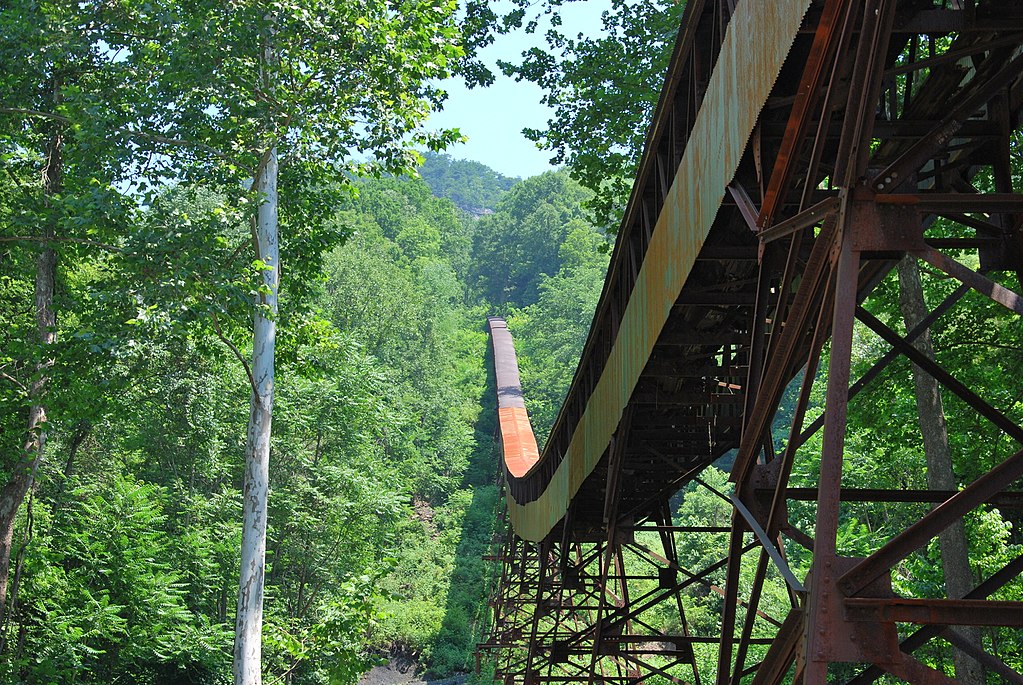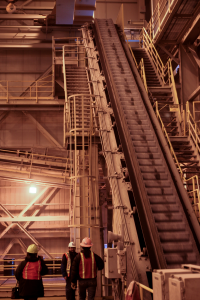Contents
Overview
Conveyors are common around surface mine yards and plants. They are an efficient way to move material, but can be very dangerous to those working around them. You may be asked to work around them: to clean up spillages, for example, or to perform routine maintenance on them. Mines have established procedures for working around belts.
Objectives
Upon completion of this lesson students will be able to:
- Explain the conveyor system.
- Define conveyor Start and Stop, Lock Out and Tag Out (LO/TO).
- Explain conveyor tags.
- Demonstrate how pull cords work.
Reading & Lecture
Conveyor Belts Safety
Following these safety rules will help keep you safe. Carelessness or lack of attention can result in your being pulled into the rollers or other moving parts, causing injury or death. Some common-sense safety practices are as follows:
- Tuck in loose clothing, or avoid wearing anything that is baggy enough to get caught by moving belts and rollers.
- Remove loose jewelry. Your mine may not allow jewelry at all, including necklaces, rings, or bracelets. Check with your safety training to see what the policy is.
- Do not remove guards from conveyor unless it is necessary to do the task assigned. Turn off the conveyor if possible, until your job is completed. Be sure to lock it out and tag it out. Replace guards immediately upon finishing and before restarting the conveyor.
- Be extremely cautious around rollers… you can get sucked in, and you will never win the battle against that equipment.
Conveyor belt shut off, lock out and tag out (LO/TO)
If you are asked to do maintenance on a conveyor, be sure it is turned off, locked out and tagged out. Notify everyone that you are turning off the conveyor, and be sure to check that it doesn’t have two sources of power. It is never a good idea to ride on a moving conveyor, so stay off of these pieces of equipment when they are running.
Before starting your task, make sure the conveyor is:
- shut off (verify shut-off by checking the power meter)
- locked out (keep the key to the lock in your pocket, always with you)
- tagged out (put your name and the date on the tag and do not give your key to anyone else)
Be sure to:
- never ask someone else to remove your lock, and do not take anyone else’s lock off of a power source – you could be killed if the equipment you are working on starts unexpectedly; and
- know what the lock out/tag out devices are and where they are stored on your mine’s property.
After you have completed the lock out/tag out procedure, verify the power is off by pushing the start button. This will alert you if there is more than one power source to the conveyor.
Conveyors usually have “kill buttons’ or “pull cords’ on them to allow you to shut the power off immediately. You need to know where these are on every piece of equipment you are asked to work around so that in case of an emergency, you can shut down the conveyor. These devices are not a substitute for a LO/TO, however.
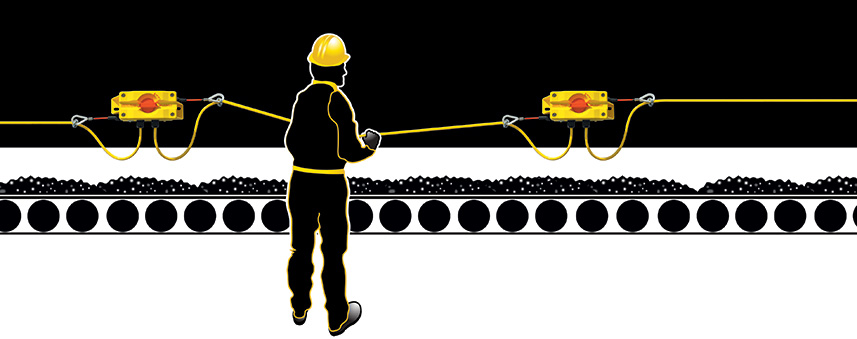
You may be asked to do maintenance on the upper end of the conveyor.
Make sure the anti-reversing mechanism on the head pulley is engaged to prevent the belt from rolling backward as you move up the conveyor. When working off the ground, at the top of the conveyor belt, for example, you must wear an approved fall protection harness. This is a belt with a lanyard that attaches you to the structure you are working on.
Your fall protection harness may have a self-retracting lanyard, or may have a fixed length lanyard. Either way, it does you no good if it isn’t attached to something that will hold your weight if you fall. Your safety trainer will provide additional training on the use of fall protection.
It is up to you to know when you should wear it, how to put it on properly, and how to check it for wear.
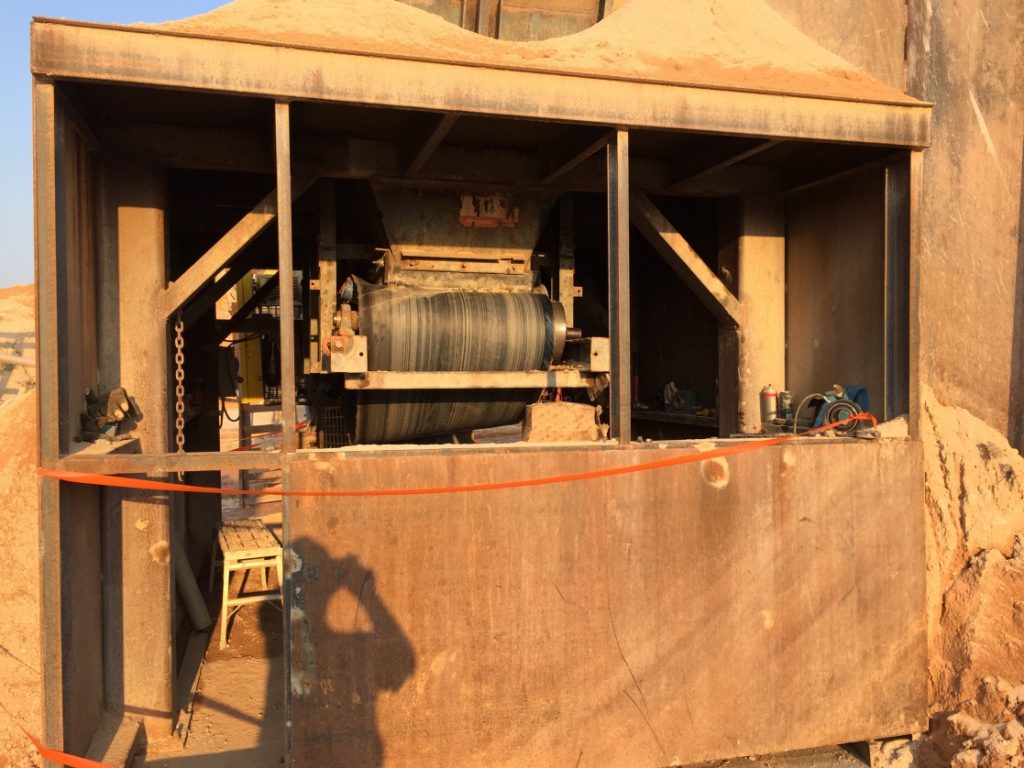
The picture above shows an inadequate conveyor tail pulley guard. The rear and top of the pulley are fully exposed providing access to moving machine parts.
The guard in the picture below covers the pinch point and the moving parts of the tail pulley. If properly maintained, this design can prove effective in preventing contact during work-related activities.
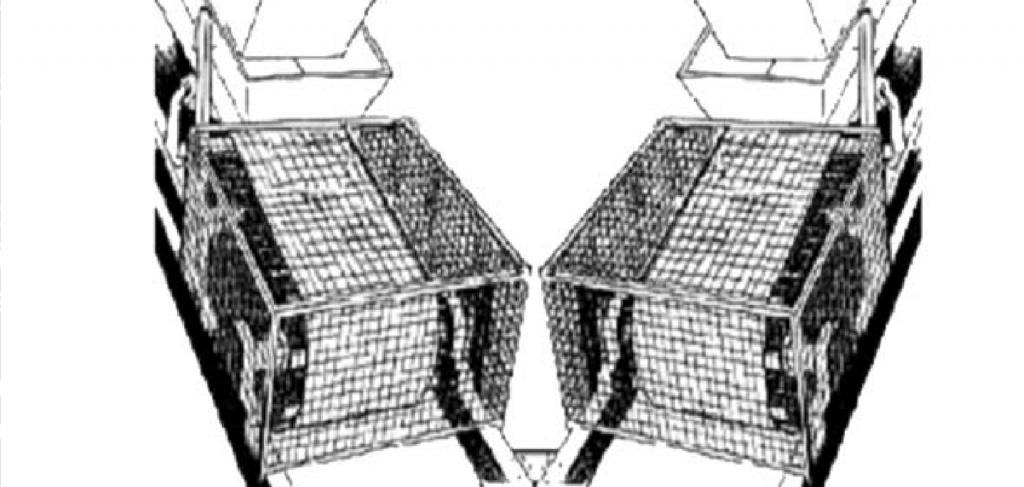
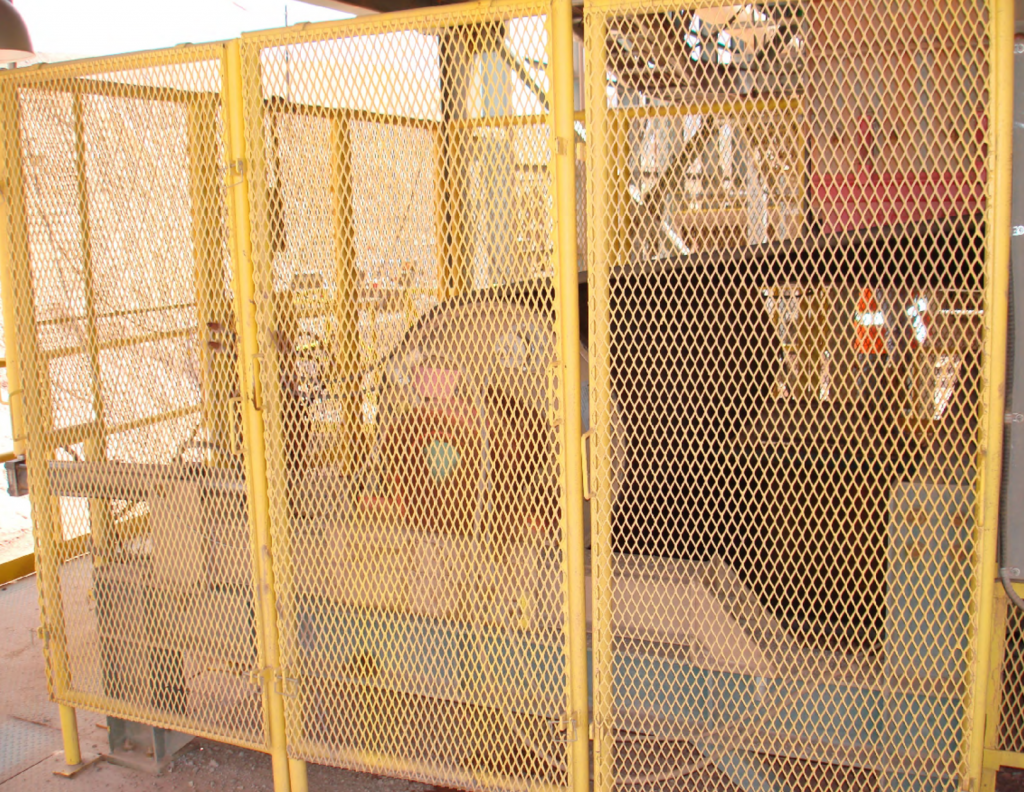
The figure above shows an elevated tail pulley. Because the underside of the pulley is accessible, it needs to be guarded. The guard may have openings large enough to allow fines to fall through, but not large enough to allow a miner to reach the moving machine parts.
Visible Signs of Bad Conveyor
- Cut and or worn return idler brackets
- Spillage in the load zone
- Edge damage to the conveyor belt (See examples)
- Hot marks on the sides of the head chute where the belt has been riding
- Belt running off at the counter weight and tail pulleys
Advantage of Keeping Your Conveyor Belts Clean
- Increase your production
- Eliminate downtime
- Greatly reduce damage to conveyor belt edges & structures
- Improve life of conveyor belt and conveyor components
- Reduce spillage
- Improve SAFETY
